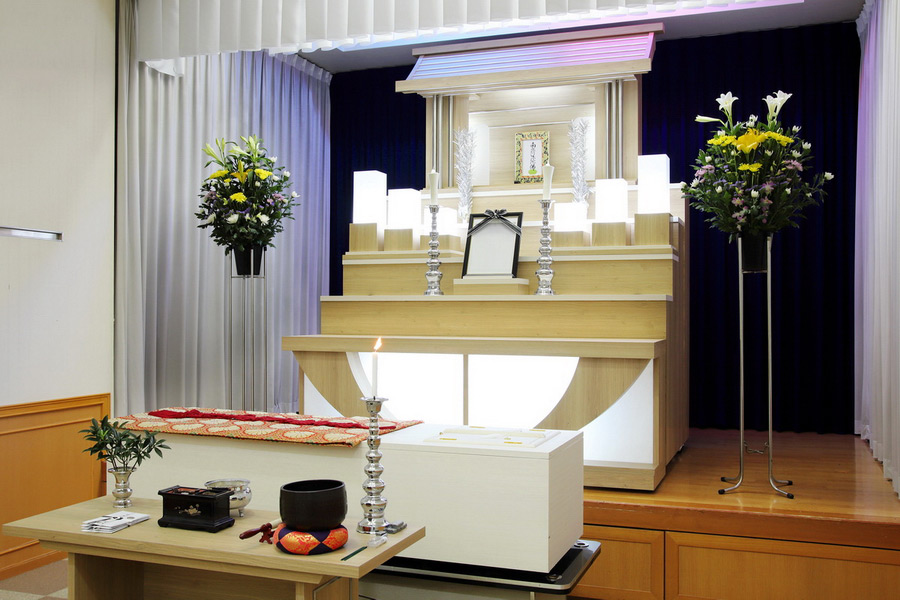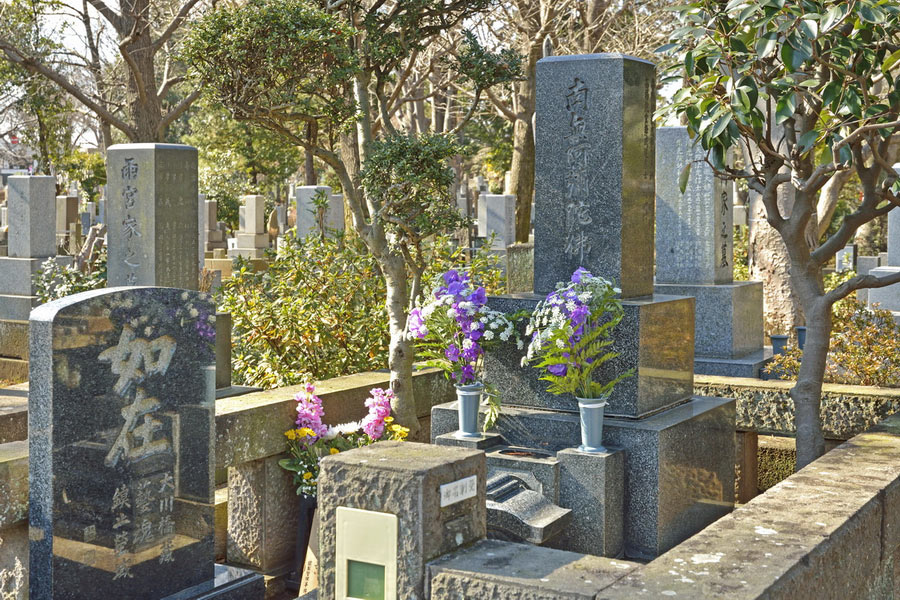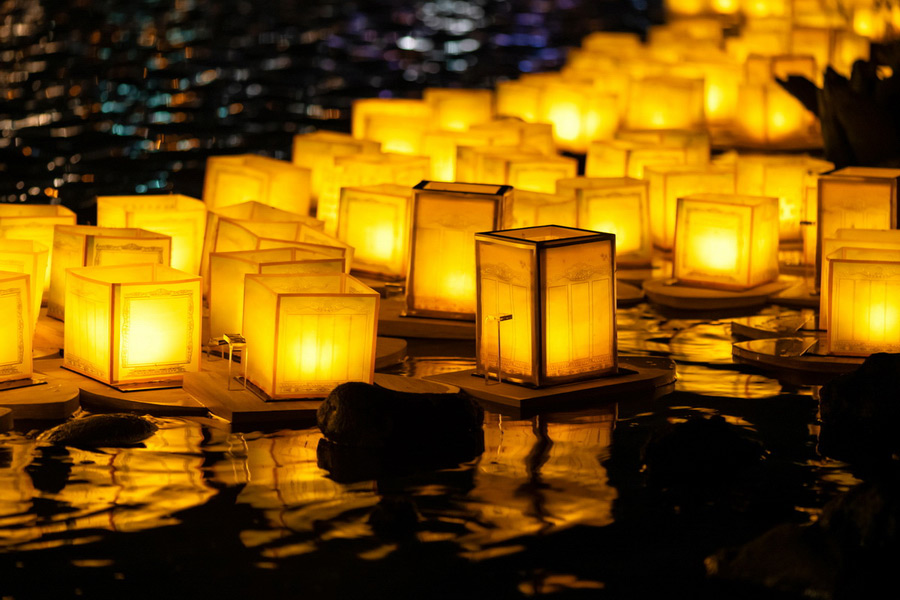
Japanese funeral rites, known as sōgi, are deeply rooted in Buddhist traditions and are notable for their rich symbolism and meticulous attention to detail. These ceremonies encompass several stages, including rituals after death, cremation, burial in a family grave, and subsequent memorial services.
Rituals After Death
In the final moments of life, the family performs the Water Ceremony (matsugo-no-mizu), in which relatives take turns moistening the lips of the deceased with water using a cotton-tipped stick. This ritual is meant to provide the last sip of water in life. To ward off evil spirits, the family's altar or shrine is closed and covered with white paper. A table near the deceased's bed, is set up with incense, a bowl of rice with chopsticks standing upright, a candle, and flowers. The eldest son is traditionally in charge of arranging the funeral, which includes notifying relatives and the deceased's workplace and coordinating with the temple to select a suitable date for the funeral.
The body is carefully washed before burial, and natural openings are sealed with cotton or gauze. Women and children are dressed in a white kimono, symbolizing purity and the journey to the afterlife, whereas men may wear a kimono or a European-style suit. The coffin is placed at home with the head facing north, next to an altar adorned with flowers. Often, personal belongings and money are placed in the coffin to aid the deceased in crossing the mythological Sanzu River, which separates the living from the afterlife.
A memorial service, held the day before the funeral, allows friends and family to honor the deceased. A priest reads Buddhist sutras, and attendees burn incense three times in remembrance. Guests often give money in a specially prepared envelope as a gesture of condolence.
Funeral Procedure

The funeral itself is held on the second day after death, beginning with a service at the temple. The temple priest conducts the funeral service and gives the deceased a Buddhist name, which is believed to prevent the soul from being disturbed by the mention of their earthly name. These names are created using ancient kanji characters that are not typically used in the names of living people. After the service, relatives have an opportunity to bid farewell and place flowers on the deceased's head. In some regions, the closest relative has the honor of nailing the coffin to seal it, sometimes using a stone instead of a hammer. The coffin is then transported to the crematorium.
Cremation has been the primary method of handling remains in Japan since medieval times, largely due to its cultural and economic significance. Families often have family graves marked by monuments where urns containing ashes are buried. At the crematorium, the cremation process takes about two hours, allowing guests to reflect and share memories. Once the cremation is complete, two family members use special chopsticks to carefully place the bones into the urn in a specific order, starting from the legs and moving up to the head. Occasionally, ashes are scattered in various places of significance to the deceased person.
The urn is then buried in the family grave at the cemetery. The gravestone, usually a stone pillar, is engraved only with the names of the deceased without photographs or dates, reflecting a focus on collective family remembrance rather than individual memorialization.
How the Deceased Are Memorialized in Japan

In Japan, memorial ceremonies are an integral part of honoring the deceased. These rituals are held on the 7th, 49th, and 100th days after death, reflecting the cultural importance of these intervals in the grieving process. Additionally, the deceased are commemorated four times a year: on New Year's Day, during the spring and fall equinoxes, and during the Obon festival.
Obon is one of Japan's most significant traditional holidays dedicated to remembering ancestors. Rooted in Buddhist traditions, this festival has been celebrated since ancient times. Depending on the region, Obon typically takes place in mid-July or August and lasts about three days.
During Obon, many Japanese people return to their hometowns to honor their ancestors. The holiday is marked by several key traditions:
- Bon-Odori Dance: A group dance performed in honor of the deceased. Participants dance in circles around a wooden yagura tower, performing simple, synchronized movements to traditional music.
- Grave Cleaning: Families visit cemeteries to clean and care for their ancestors' graves, often decorating them with flowers and lanterns as a sign of respect.
- Offerings to the Departed: Families set up special altars at home, presenting offerings of food and drink to honor their deceased loved ones.
The final day of Obon features a special ceremony known as Tōrō nagashi, where paper lanterns are floated down rivers and streams. This symbolizes the guiding of ancestral spirits back to the afterlife.
Japanese traditions of funerals and memorials emphasize harmony between the living and the deceased, reflecting a deep respect for both ancestors and the natural world.

